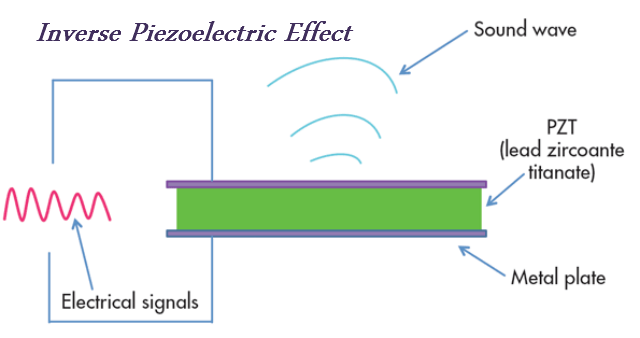

Small intestine submucosa collagen fibres observed under an atomic force microscope. In fact, the piezoelectric effect is a type of electromechanical coupling effect, which widely exists in piezoelectric biological tissues, such as bones, wool, tendons and the epidermis. They verified that cells sense pressure and elicit the sensation of touch through the electromechanical coupling effects of the proteins Piezo 1 and Piezo 2. The 2021 Nobel Prize in Physiology or Medicine was awarded to scientists David Julius and Ardem Patapoutian, who solved the mystery of the human sensation of touch and pain. However, owing to the high cost and technological limitations, most research about piezoelectricity on biological tissues remains theoretical. Piezoelectric biomaterials have a potential effect of piezoelectricity on biological tissues, such as facilitating tissue recovery and bone regeneration, and can also be applied in implantable sensors and actuators. Piezoelectricity is electricity resulting from applying pressure. Potential application of piezoelectric biomaterials in the biomedical field Their findings were published in the academic journal Advanced Materials, under the title "Van der Waals Exfoliation Processed Biopiezoelectric Submucosa Ultrathin Films." Yang Zhengbao, Assistant Professor in the Department of Mechanical Engineering (MNE). It is also the basis of a number of scientific instrumental techniques with atomic resolution, such as scanning tunneling microscopes.The research was led by Dr. Sensors, high voltage generators, electronic frequency generators, microbalances, inkjet printers, and ultra-fine focusing and alignment of optical assemblies among others all exploit piezoelectric technology. Non-acoustic piezoelectric devices include motors and actuators. The piezoelectric effect is very useful in a variety of applications that involve the production and detection of sound. It will calculate the object’s distance using the time interval from the transmitter and the receiver. When the receiver piezoelectric device gets compressed by the returning sound wave, it sends the signal (voltage) to the signal-processing electronics which will take that bounced-back sound wave and process it. The receiver, unlike the transmitter, uses the direct piezoelectric effect. Once the sound wave hits an object, it will bounce back and will be detected by the receiver. The sonar transmitter uses inverse piezoelectric effect when it uses voltage to send out a sound wave to search for objects ahead. Today, sonar has many applications, from locating fish to underwater navigation. Initially developed to help detect icebergs, interest in sonar rose during World War I to help locate submarines underwater. Scientists kept searching for higher performance materials and this resulted in the development of barium titanate and lead zirconate titanate, two materials that adopt piezoelectric characteristics with very specific properties suitable for particular applications. A breakthrough came when scientists developed a new class of man-made materials, called ferroelectrics, which exhibited piezoelectric characteristics many times more powerful than piezoelectric crystals. Other naturally-occurring piezoelectric materials include topaz, tourmaline, and even bone. The most well-known, and the first commercially available piezoelectric material used in electronic devices is the quartz crystal. There are a variety of piezoelectric materials, both man-made and natural, that can produce electricity. The atoms will then have to move to rebalance themselves and this is what causes piezoelectric crystals to deform when voltage is applied across. The inverse piezoelectric effect occurs in the opposite way when atoms are subjected to electrical pressure when a voltage is put across a piezoelectric crystal. By subjecting the piezoelectric crystal to physical stress, a voltage is produced across its opposite faces. Now the dipole moments no longer cancel one another out and net positive and negative charges appear on opposite crystal faces. When the crystal is stretched or compressed, this pushes the charges out of balance. The forces (electric dipole moments) of the charges exactly cancel out, leaving no net charge on the crystal faces. Normally, the charges in a piezoelectric crystal are exactly balanced, even if they're not symmetrically arranged.


 0 kommentar(er)
0 kommentar(er)
